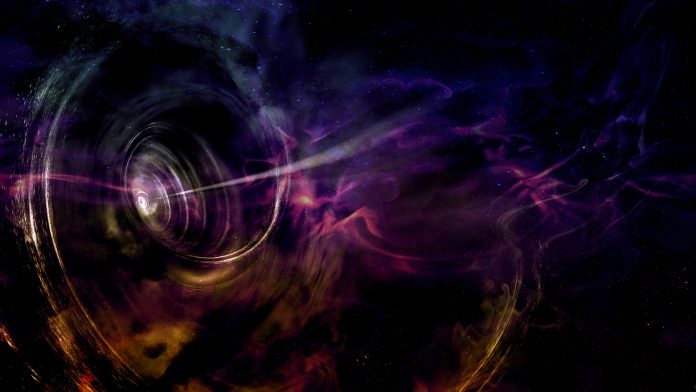NASA’s Hubble Space Telescope has discovered a black hole in the centre of dwarf galaxy, Henize 2-10, that is integral to star formation.
A black hole at the centre of the dwarf galaxy Henize 2-10, which is situated 30 million light-years away, in the southern constellation Pyxis, is helping to generate new stars as opposed to destroying them.
Star formation in Henize 2-10
This fascinating breakthrough has Henize 2-10, which is home to only one-tenth the number of stars found in our Milky Way, is in position to play a major role in unravelling the mystery of where supermassive black holes came from in the first place.
The Hubble Space Telescope represents global cooperation between NASA and the European Space Agency. NASA’s Goddard Space Flight Center in Greenbelt, Maryland, oversees the telescope. The Space Telescope Science Institute (STScI) in Baltimore, Maryland, administers Hubble science operations. STScI is operated for NASA by the Association of Universities for Research in Astronomy in Washington, D.C.
“Ten years ago, as a graduate student thinking I would spend my career on star formation, I looked at the data from Henize 2-10 and everything changed,” explained Amy Reines, who published the first evidence for a black hole in the galaxy in 2011 and is the now the principal investigator on the new Hubble observations.
The research was published in the January 19 issue of Nature.
Resolving the mystery of black holes
“From the beginning I knew something unusual and special was happening in Henize 2-10, and now Hubble has provided a very clear picture of the connection between the black hole and a neighbouring star forming region located 230 light-years from the black hole,” added Reines.
“At only 30 million light-years away, Henize 2-10 is close enough that Hubble was able to capture both images and spectroscopic evidence of a black hole outflow very clearly. The additional surprise was that, rather than suppressing star formation, the outflow was triggering the birth of new stars,” said Zachary Schutte, Reines’ graduate student and lead author of the new study.
The role of radio and X-ray emissions
Ever since her first breakthrough of distinctive radio and X-ray emissions in Henize 2-10, Reines has theorised that they originate from a massive black hole, but not as supermassive as those seen in larger galaxies.
Meanwhile, other astronomers, hypothesised that the radiation was likely being emanated by a supernova vestige, which would be a typical occurrence in a galaxy that is rapidly pumping out massive stars that quickly explode.
“Hubble’s amazing resolution clearly shows a corkscrew-like pattern in the velocities of the gas, which we can fit to the model of a processing, or wobbling, outflow from a black hole. A supernova remnant would not have that pattern, and so it is effectively our smoking-gun proof that this is a black hole,” Reines explained.
Reines anticipates that further investigation will be aimed at dwarf galaxy black holes going forward, with the intention of utilising them help understand how supermassive black holes came to exist in the early Universe.
The black hole in Henize 2-10 is around one million solar masses. In bigger galaxies, black holes can be more than one billion times our Sun’s mass. The larger the host galaxy, the larger the central black hole.
The origin of supermassive black holes
Present theories on the source of supermassive black holes break down into three categories. First, they developed similarly to smaller stellar-mass black holes, from the implosion of stars, and assembled enough material to grow supermassive.
Secondly, special conditions in the early Universe enabled for the development of supermassive stars, which collapsed to form massive black hole ‘seeds’. Finally, seeds of potential supermassive black holes originated from dense star clusters, where the cluster’s overall mass would have been great enough to produce them from gravitational collapse.
At present, none of these theories seem more likely than any other. Dwarf galaxies such as Henize 2-10 present promising clues to this mystery, as they have stayed small over cosmic time, as opposed to enduring the growth and mergers of bigger galaxies such as the Milky Way.
Astronomers believe that dwarf galaxy black holes may act as an analogue for black holes in the early Universe, when they were starting to take shape and expand.
“The era of the first black holes is not something that we have been able to see, so it really has become the big question: where did they come from? Dwarf galaxies may retain some memory of the black hole seeding scenario that has otherwise been lost to time and space,” Reines concluded.







